The evolution towards the abstract, Kandinsky’s foundations for «Black Lines».
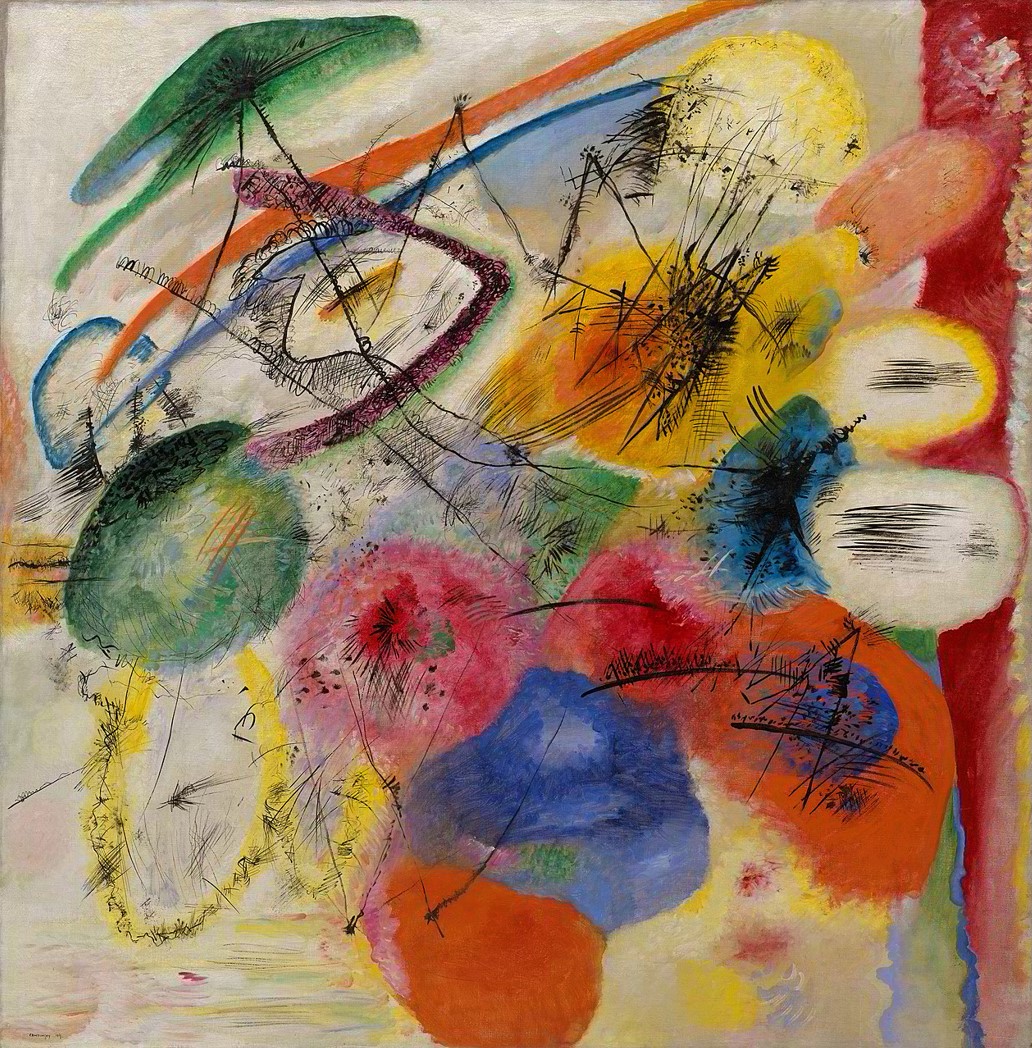
Artist: Vasily KandinskyTitle: Black LinesDate: December 1913Medium: Oil on canvasDimensions: 51 3/8 x 51 5/8 inches (130.5 x 131.1 cm)Artwork Type: PaintingLocation: New York, The Solomon R. Guggenheim MuseumBUY IT NOW:
1913 was a crucial year in Kandinsky’s career. It was then that he created «Black Lines» and shaped his abstract artistic vision. At this point, Kandinsky already had well-developed aesthetic theories and aspirations. He valued pictorial abstraction as the most effective art form for revealing hidden aspects of the empirical world, expressing subjective realities and exploring the metaphysical.
Kandinsky knew that he had to develop his style gradually in order for the public to understand his artistic vision. Therefore, in most of his works from this period, he retained fragments of recognisable images. For example, in his Painting with White Border, 1913, he included a simplified image of a Russian troika in the upper left as a spiritual representation of Moscow. This showed his belief that we are still rooted in the external appearance of nature and that we must draw forms from it.
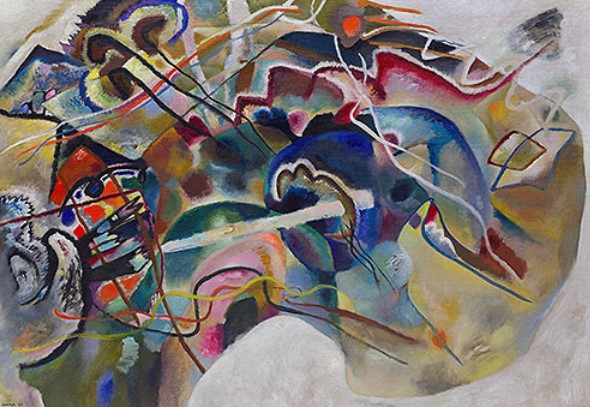

Kandinsky held the conviction that colour, form and line constituted the primordial language capable of translating an artist’s «inner need». For him, these artistic elements were not merely aesthetic tools, but vehicles expressing the spiritual impulse of the creator.
Technique and Detail in «Black Lines»
A Burst of Colour and Form
In «Black Lines», Kandinsky presents a striking and vibrant composition. Dynamic lines are superimposed on patches of colour, creating an effect similar to a floating puzzle. Circular and oval shapes, with primary and complementary colours such as red, yellow, orange, green, blue and pink, bring the work to life. The black lines, varying in intensity from bold strokes to delicate details, give structure to the composition and add depth.
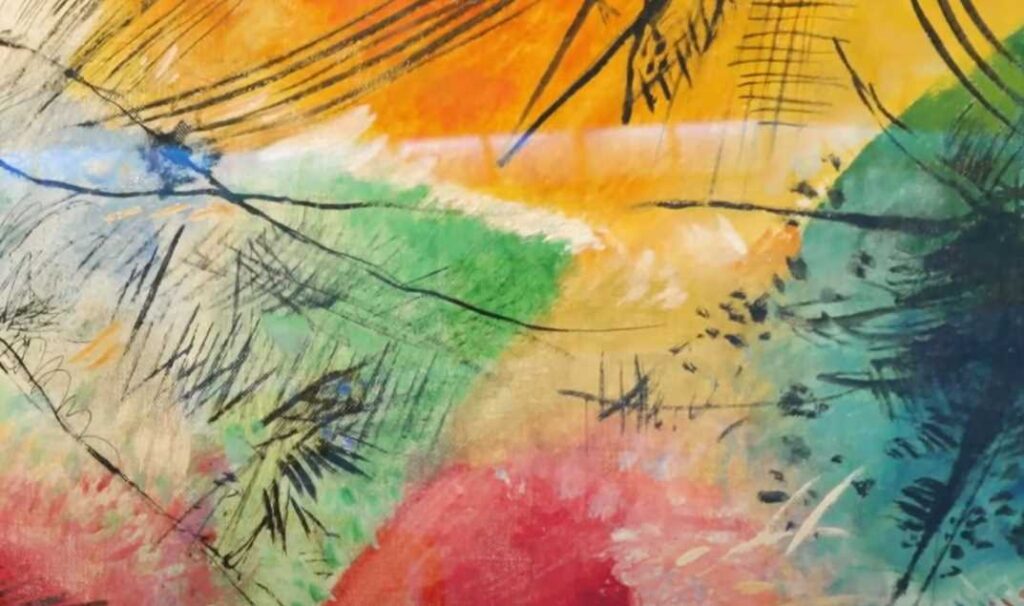
Dynamism zigzag & criss-cross
In some places, the black lines become thicker or fade, indicating the use of different media. Lines zigzag and criss-cross, creating a dynamic effect. Within the circular shapes, precise repetitions of horizontally painted lines can be seen fading to the right. Some areas are shaded with intersectinglines, giving the impression of a drawing or engraving.
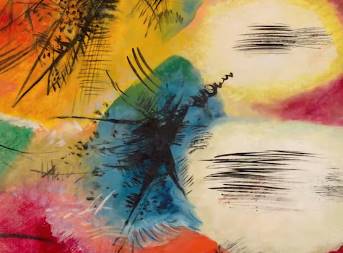
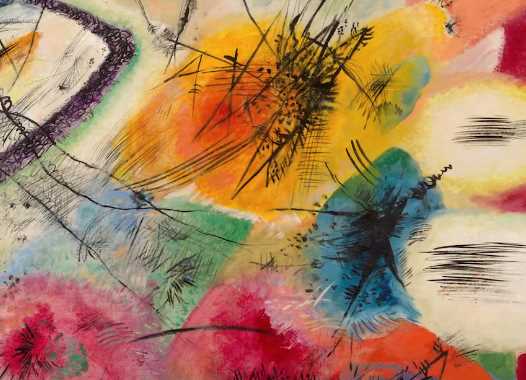
The Intricate Web of Lines and Shapes
In certain regions of the work, especially in a yellowish-white oval in the upper right, there are extremely fine and delicate lines, similar to those drawn by a pen when scratching and scribbling on the surface. These fine lines are surrounded by continuous circles that seem to wrap around them, as if they were wire with a spring wrapped around them. The varied range of energetic, calligraphic and lyrical marks across the canvas creates a unique visual experience.
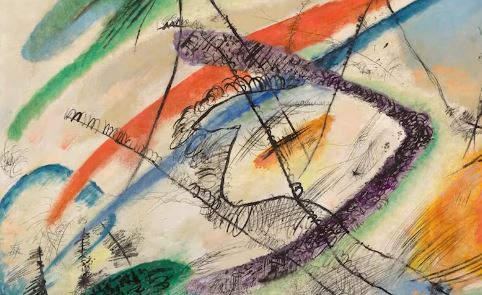
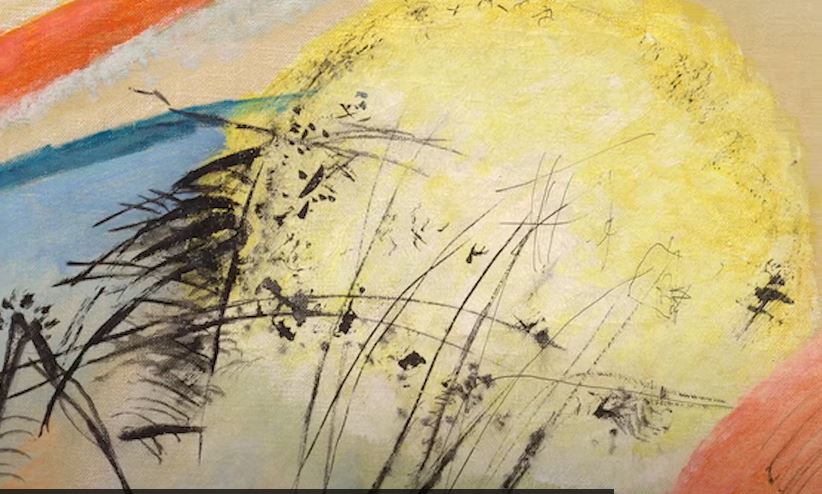
Полная свобода!
Направление искусства, названное абстракционизмом (от лат. abstractio — отвлечение, удаление), предполагает полный отказ от реалистичного изображения действительности. При этом чувства, мысли и идеи выражаются через сочетания цветов и различных геометрических фигур, линий, пятен.
Легко представить типичный диалог посетителей «абстракционистской» выставки: — Ну и что все это означает — все эти пятнышки и черточки? — Да как же ты не понимаешь! Художник хочет нам сказать, что…
Абстракционизм словно предлагает зрителю самому дописать картину, разглядев за ее символикой авторскую идею. А поскольку ничего похожего на реальность на картинах абстракционистов не изображено, смысл приходится отыскивать через ассоциации.
Таким образом, художник обретает полную свободу: его фантазию не ограничивает ничего, кроме собственного вкуса, чувства цвета и соразмерности. Но такая же свобода интерпретации дана и зрителю: каждый человек может увидеть на картине этого жанра что-то свое…
Kandinsky’s own testimony and thoughts on «Black Lines».
Using the cosmic metaphor, the artist suggests that, technically, each work of art emerges in a manner similar to the cosmos, through creative «catastrophes» that ultimately generate a harmony, comparable to the «music of the spheres», born from the initial cacophony of different elements.
Vibrant ovals of colour explode on the canvas, crossed by energetic lines that give life to a unique visual cosmos. Kandinsky reflected on the nature of his art, comparing it to a thunderous collision of different worlds destined to come into conflict to give rise to a new universe.
«Black Lines emerges as one of Wassily Kandinsky’s first truly abstract forays, devoid of references to the natural world by his own account.
Начало абстракционизма. Василий Кандинский
Одним из основоположников абстракционизма считают выдающегося русского живописца Василия Кандинского (1866–1944). К этому стилю художник пришел еще в начале 1910-х годов в результате долгих творческих и духовных исканий.
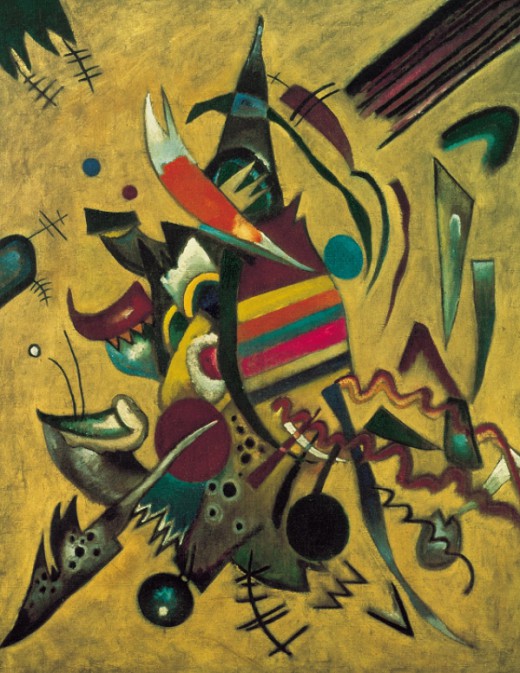 Василий Кандинский «Точки» (1920). Художник разработал концепцию «ритмического» использования цвета
Василий Кандинский «Точки» (1920). Художник разработал концепцию «ритмического» использования цвета
Он обращался к экспрессионизму, интересовался синтезом цвета и музыки и даже написал книгу «О духовном в искусстве», где много рассуждал о важности познания не внешней формы, а внутреннего содержания вещей. В результате этих размышлений художник отказался от изображения реальных объектов и решил, что гораздо важнее язык ассоциации
Многое Кандинский взял и от символистов: к этому стилю, в частности, восходит его понимание черного как символа смерти, белого — как рождения, красного — как мужества. Горизонтальная линия на его абстрактных полотнах означает пассивность, вертикальная — напротив, активное начало.





























